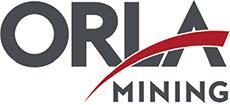A financial asset is measured at FVOCI if both of the following conditions are met:
| a. | the financial asset is held within a business model whose objective is achieved by both collecting contractual cash flows and selling financial assets, and |
| b. | the contractual terms of the financial asset give rise on specified dates to cash flows that are solely payments of principal and interest on the principal amount outstanding. |
We may make an irrevocable election at initial recognition to carry at FVOCI particular investments in equity instruments that would otherwise be measured at FVTPL.
A financial asset is required to be measured at FVTPL unless it is measured at amortized cost or at FVOCI.
If we change our business model for managing financial assets, we reclassify all affected financial assets on a prospective basis, without restating any previously recognized gains, losses or interest.
If the asset is reclassified to fair value, we determine the fair value at the reclassification date, and recognize in profit or loss any gain or loss arising from a difference between the previous carrying amount and fair value.
An embedded derivative is a component of a hybrid contract that also includes a non-derivative host, with the effect that some of the cash flows of the combined instrument vary in a way similar to a stand-alone derivative. A derivative that is attached to a financial instrument but is contractually transferable independently of that instrument, or has a different counterparty, is not an embedded derivative, and is treated as a separate financial instrument.
Upon initial recognition, we measure a financial asset at its fair value. However, we measure trade receivables that do not have a significant financing component at their transaction price. After initial recognition, we measure financial assets at amortized cost, FVOCI, or FVTPL.
Changes in fair value of a financial asset that is carried at FVTPL are recognized in profit or loss, and changes in fair value of a financial asset that is carried at FVOCI are recognized in other comprehensive income, unless it is part of a hedging relationship.
Gains or losses on a financial asset that is carried at FVTPL are recognized in profit or loss, and gains or losses on a financial asset that is carried at FVOCI are recognized in other comprehensive income, unless it is part of a hedging relationship. A gain or loss on a financial asset that is measured at amortized cost and is not part of a hedging relationship is recognized in profit or loss when the asset is derecognized, impaired, amortized, or reclassified.
(ii)Financial liabilities
We initially recognize financial liabilities when the Company becomes party to the contractual provisions of the instrument. At initial recognition, we measure each financial liability at its fair value. In the case of a financial liability not at FVTPL, we deduct transaction costs that are directly attributable to the issuance of the financial liability.
Subsequent to initial recognition, we classify and measure all financial liabilities at amortized cost using the effective interest method, except for financial liabilities at FVTPL.
We may, at initial recognition, irrevocably designate a financial liability as measured at FVTPL.
(iii)Impairment
We recognize a loss allowance for expected credit losses on financial assets, based on lifetime expected credit losses.
